Defenses for Spring 2024
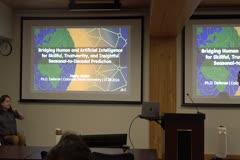
Bridging Human and Artificial Intelligence for Skillful, Trustworthy, and Insightful Seasonal-to-Decadal Climate Prediction
July 26, 2024
Jamin Rader
Seasonal-to-decadal climate variability is inherently difficult to predict and is intimately connected to human and natural systems worldwide. Skillful forecasts on two-month to ten-year timescales would enable proactive and informed decision-making for many industries, including fisheries, water management, and agriculture. Understanding the behavior of seasonal-to-decadal climate variability…
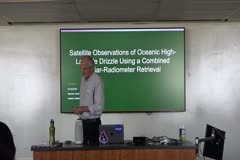
SATELLITE OBSERVATIONS OF OCEANIC HIGH-LATITUDE DRIZZLE USING A COMBINED RADAR-RADIOMETER RETRIEVAL
July 24, 2024
Spencer Jones
The high latitude oceans are problematic for satellite estimations of precipitation due to the high frequency of occurrence of light drizzle and snowfall. Microwave radiometric observations are sensitive to integrated cloud water path and provide good sampling for robust statistics but lack skill in distinguishing precipitation onset from cloud water and cloud ice due to radiation scattering.…
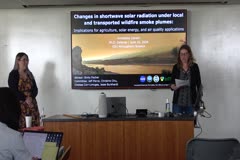
CHANGES IN SHORTWAVE SOLAR RADIATION UNDER LOCAL AND TRANSPORTED WILDFIRE SMOKE PLUMES: IMPLICATIONS FOR AGRICULTURE, SOLAR ENERGY, AND AIR QUALITY APPLICATIONS
June 10, 2024
Kimberley Corwin
The emission and transport of pollutants from wildfires is well-documented, particularly at the surface. However, smoke throughout the atmospheric column affects incoming shortwave solar radiation with potentially wide-ranging consequences. By absorbing and scattering light, smoke changes the amount and characteristics of shortwave radiation–a resource that controls plant photosynthesis,…
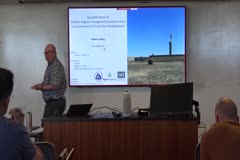
QUANTIFICATION OF VOLATILE ORGANIC COMPOUND EMISSIONS FROM UNCONVENTIONAL OIL AND GAS DEVELOPMENT
May 30, 2024
Weixin Zhang
Oil and gas (O&G) development in the U.S. has accelerated in the past two decades, aided by unconventional extraction techniques including hydraulic fracturing and horizontal drilling. Potential environmental and health impacts of volatile organic compounds (VOCs) originating from O&G activities in populated regions have raised concerns. In Broomfield, Colorado, six new O&G well pads were…
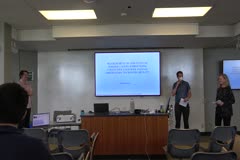
MEASUREMENT OF LOW-ALTITUDE AEROSOL LAYERS SURROUNDING CONVECTIVE COLD POOL PASSAGE OBSERVED BY UNCREWED AIRCRAFT
May 22, 2024
Brian Heffernan
Convectively generated cold pools can have myriad impacts on local aerosol concentrations. Passage of cold pools may loft dust, pollen or other aerosols from the surface, and precipitation and humidity changes accompanying cold pools also impact local aerosols in several ways. The vertical profile of aerosols can have important effects on meteorology, however, the effects of cold pools on the…
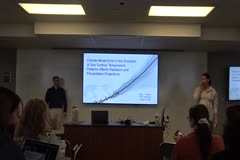
CLIMATE MODEL ERROR IN THE EVOLUTION OF SEA SURFACE TEMPERATURE PATTERNS AFFECTS RADIATION AND PRECIPITATION PROJECTIONS
May 09, 2024
Marc Alessi
Atmosphere-ocean general circulation models (AOGCMs) are the primary tool climate scientists use in predicting the effects of climate change. While they have skill in reproducing global-mean temperature over the historical period, they struggle to replicate recently observed sea surface temperature (SST) trend patterns. In this dissertation, we quantify the impact of potential future model…
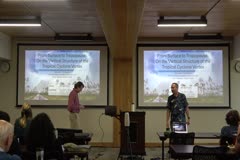
From Surface to Tropopause: On the Vertical Structure of the Tropical Cyclone Vortex
April 30, 2024
Alexander DesRosiers
The internal vortex structure of a tropical cyclone (TC) influences intensity change. Beneficial structural characteristics that allow TCs to capitalize on favorable environmental conditions are an important determinant as to whether a TC will undergo rapid intensification (RI) or not. Accurately forecasting RI is a significant challenge and past work identified characteristics of radial and…
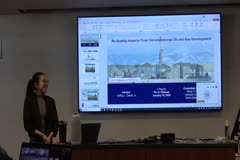
AIR QUALITY IMPACTS FROM UNCONVENTIONAL OIL AND GAS DEVELOPMENT
January 10, 2024
I-Ting Ku
Unconventional oil and natural gas development (UOGD) has expanded rapidly across the United States raising concerns about associated air quality impacts. While significant effort has been made to quantify and limit methane emissions, relatively few observations have been made of emitted Volatile Organic Compounds (VOCs). Extensive air monitoring during development of several large, multi-well…
